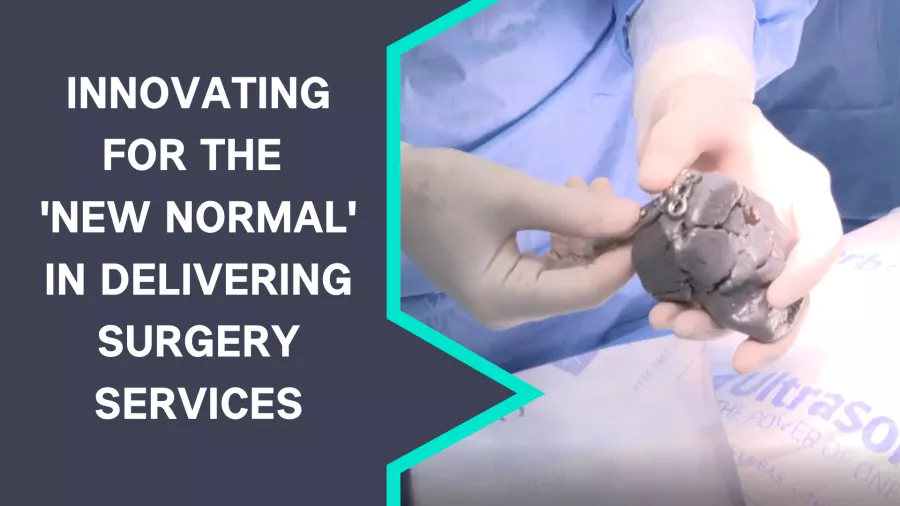Innovating for the 'new normal' in delivering surgery services
History tells us that organizations that invest in innovation during a crisis outperform their peers in the recovery - McKinsey.
COVID-19 has disrupted surgical services in hospitals across the country, leading to the cancellation or deferral of millions of elective procedures, resulting in a significant backlog of elective surgeries, and leaving many hospital systems across the US wondering how they can quickly and safely increase operating room throughput to reverse the mounting backlog.
How has the delivery of surgery services been affected by COVID-19?
COVID-19 has had a severe effect on planned surgery in the US in 2021. Looking at orthopedics specifically, this 2020 study of orthopedic surgery volumes by the Journal of Bone and Joint Surgery suggests that the US faces a cumulative backlog of more than a million joint and spine surgery cases in mid-2022, which requires up to 16 months to work through. This backlog can be felt not just in orthopedics, but across many specialties and services in the US.
While this does make for stark reading, and with few established ways of reducing the growing backlog of cases delayed due to the COVID-19 pandemic, one innovative new solution to increase operating room throughput while keeping costs down is the use of 3D anatomical modeling for surgical planning.
3D modeling, once a “new fangled” technology reserved for healthcare hobbyists, has fast become a recognized solution with an increasing number of game-changing applications in healthcare, for example, with an increasing number of surgical teams reaping the benefits of the advanced insights and precision accuracy from 3D replicas of their patient’s anatomy – created from their existing CT and MRI scans.
“Okay, great.” I hear you say, “But, how will 3D modeling help to increase operating room throughput without hiking up costs?”
I’m glad you asked. Too often for complex cases, 2D images alone do not fully convey the necessary precision and insight for surgeons to confidently plan a procedure. This has the potential to cause longer OR times, a lack of clarity among surgical teams, higher costs to the hospital, and heightened risks for the patient.

Above: 3D imaging removes ambiguity from analyzing the patient’s 2D images.
Conversely, 3D virtual and 3D printed models of patient anatomy help surgeons to quickly and clearly understand the pathology before surgery while supporting enhanced intra-team and patient communication. Ultimately, 3D modeling helps surgeons to make faster decisions with much greater confidence to help them perform safer, often faster and certainly cheaper procedures with reduced risk of complications.
This study found that surgeons using 3D modeling to plan procedures typically see 62 minutes of time saved on average per case (or $3720 per case saved from reduced time).
Again, looking specifically at orthopedics, surgeons typically perform an average of 32 orthopedic procedures each month. This leaves the potential for just one orthopedic surgeon to save around 33 hours per month (or $119,040 in savings for the hospital). If you include the rest of your surgical teams, that number can rise further and allow more block time to be opened within your hospital. This is real time and money that could be reinvested into completing additional procedures and enable them to truly tackle the backlog of cases.
Reporting on the study, Radiology Business reports that these “3D printed anatomical models pay for themselves, instilling surgeons and proceduralists with “superior confidence” in their ability to perform complicated procedures that have typically been poorly understood, and financial savings due to the shorter procedure times.”
In addition to time saving in the OR, 3D modeling has been found to be incredibly effective in supporting surgeons during patient (and family) consent discussions. This May 2020 study shows that patients and their families were much better informed on their condition and treatment path through the use of 3D modeling. Ultimately, having a physical 3D model available makes the explanation of the patient’s complex condition as well as the intended surgical procedure to patients and family much simpler and easier to understand. This could be a game-changer for safely improving patient conversion rates while obtaining fully informed consent.
With growing case backlogs across all specialties – health systems, surgeons and patients truly stand to benefit from 3D modeling being used in the patient care pathway in 2021 and beyond. And, as we have discovered, 3D modeling really does play a significant role in keeping surgery costs down while having a positive impact on increasing OR throughput.
Discover how 3D modeling could support you to drive surgical costs down and increase operating room throughput. Get in touch via our Contact page to arrange a 10 minute call with one of our service specialists today.
Get in touch




